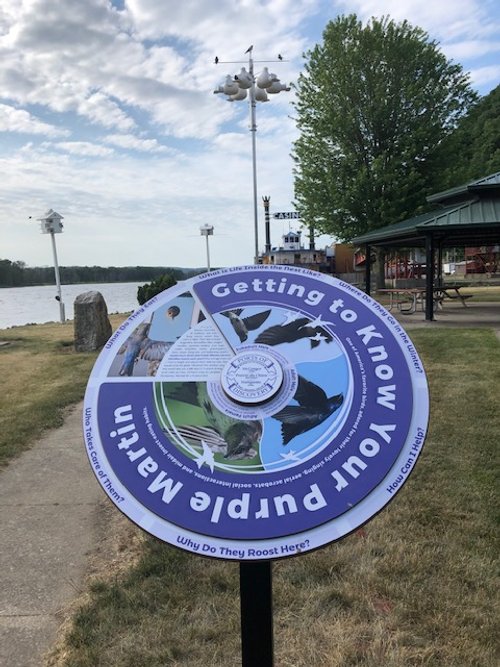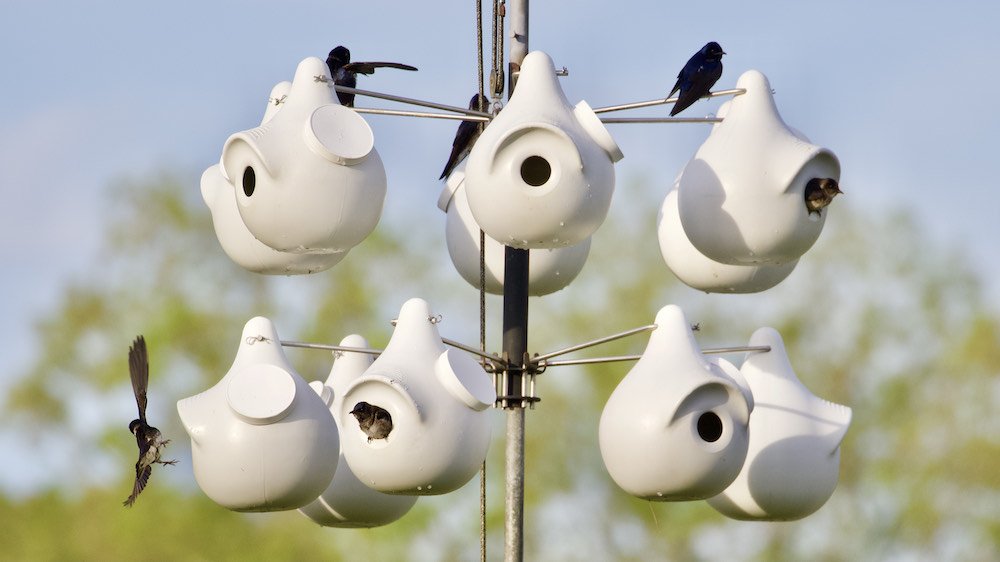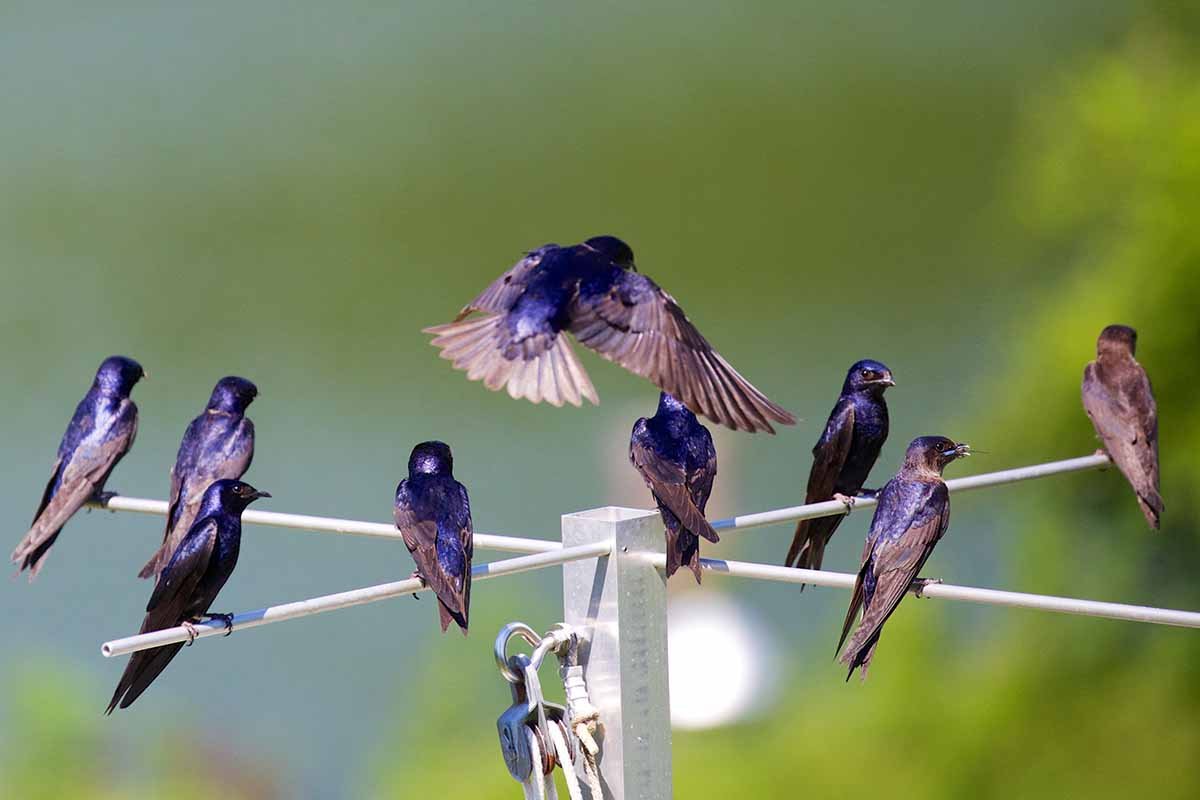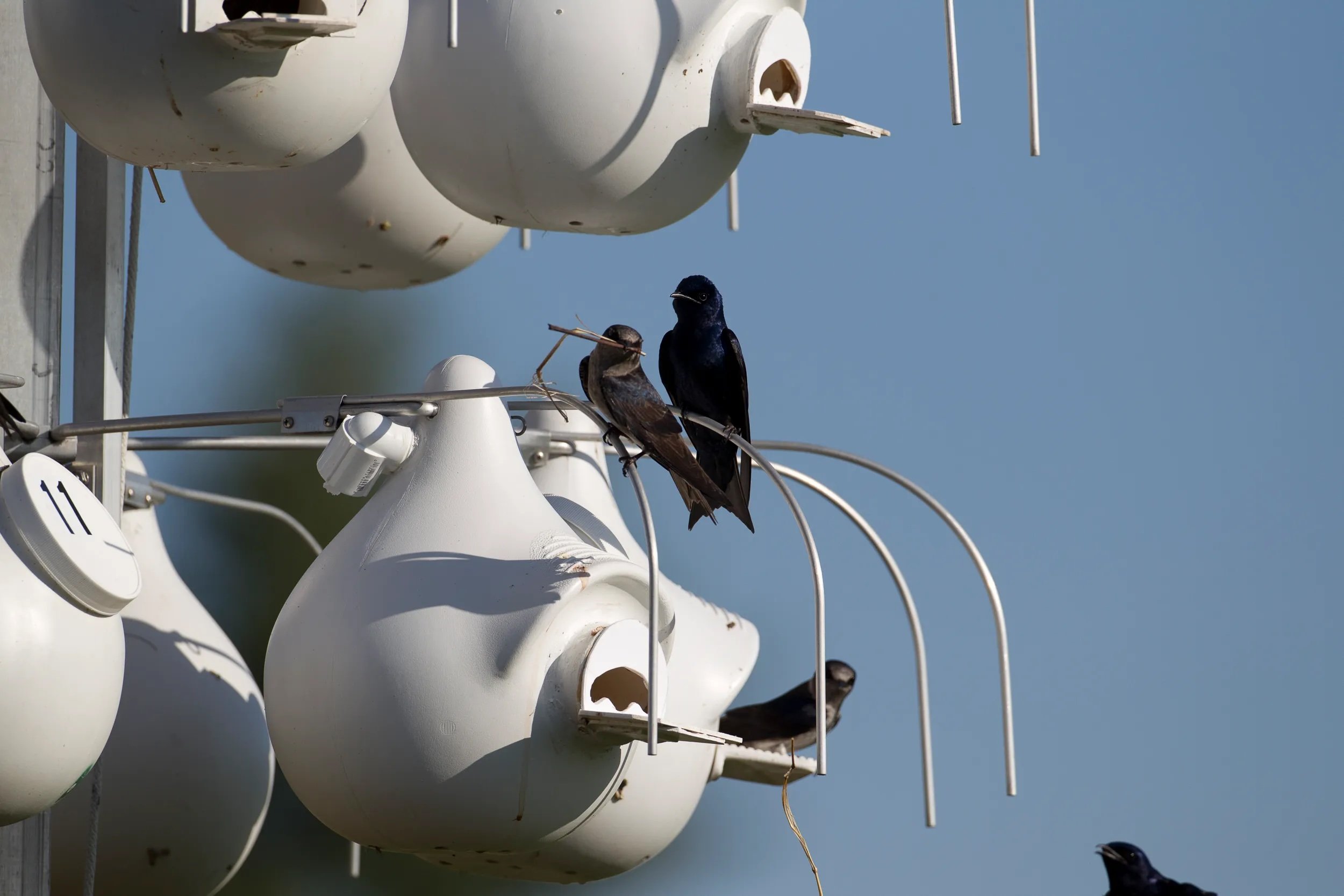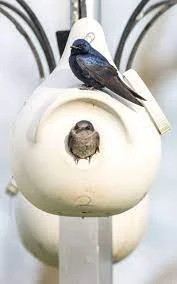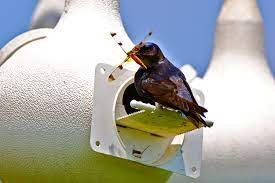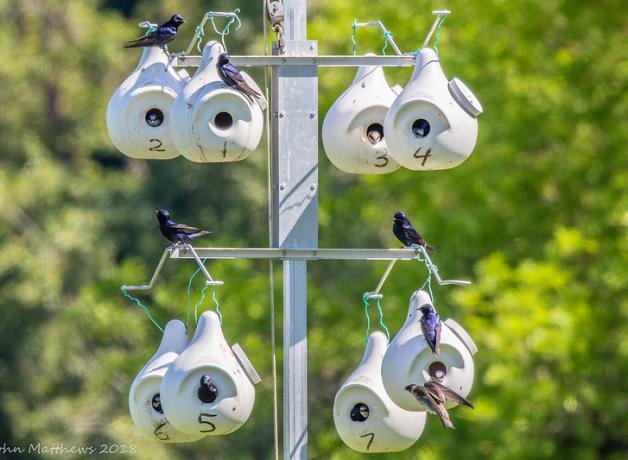Purple Martin Houses
Witness the beauty of nature in our community's cherished birdhouses.
Purple Martins are native songbirds in the swallow family. They are considered secondary cavity nesters—they do not excavate their own cavities such as woodpeckers. Instead, they use cavities that are already created, either by other animals or in natural cavities of cliffs and rock formations. Traditionally Purple Martins nested in natural cavities such as old woodpecker holes, on rock ledges, or in dead trees. However, thousands of years ago, people began providing man-made housing for the Purple Martins in the form of dried, hollow gourds. Over time, the successful nesting of martins in these man-made homes, paired with the decline of natural cavities, led to a complete behavior shift within the eastern species. Now, Purple Martins nest almost exclusively in human-supplied housing. They are dependent on us for their survival. They are one of America’s most well-loved songbirds for many reasons; their chattering song, aerial acrobatics, insect-eating habits and their tolerance of humans.
Marquette began installing purple martin cavities in 2018. In 2023, there were 30 eggs, and 156 babies. Marquette has the capacity to house up to 95 pairs of Marquette has also been designated a Bird Friendly City and has events during the year for bird enthusiasts to enjoy.
Marquette is located along the Mississippi Flyway which expands from the headwaters of the Mississippi to the Gulf of Mexico. More than 325 bird species make the round-trip each year along the Mississippi Flyway, from their breeding grounds in Canada and northern Untied States to their wintering grounds along the Gulf of Mexico and to Central and South America. The Purple Martins breed in the North America and winter in South America so keep an eye out for them along the Flyway. You will only find Purple Martins in the Americas. You will not find them in Europe, Asia, or Africa.


